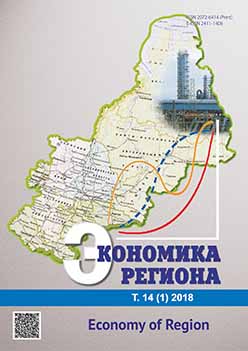Угрозы кадровому потенциалу региональных вузов
Threats to the Human Capacity of Regional Higher Education Institutions
Author(s): Evgeny Valentinovich RomanovSubject(s): Economy, Geography, Regional studies
Published by: Институт экономики Уральского отделения Российской академии наук
Keywords: strategy of scientific and technological development; higher education; framework of modernization; threat to the human capital; per capita funding; priorities of scientific activity; decrease in pate
Summary/Abstract: In recent years, the sphere of science and education in Russia undergoes significant reforms. However, the existing framework guiding the development of the higher education contradict the Strategy of Scientific and Technological Development of Russia. These contradictions concern the conditions for building an integral system of personnel reserve and recruitment, which is necessary for the scientific and technological development of the country. The change of the funding model and the transition to two-tier higher education contribute to the outflow of talented youth to the cities where branded universities are concentrated. It creates threats to the human capacity of regional higher education institutions (both regarding staffing number, and regarding personnel reserve). Decreasing trend in number of students because of the federal budget appropriation and the existing system of per capita funding for regional higher education institutions are the threats for regional higher education. These threats can result in permanent reduction of the number of academic teaching staff and in potential decline in quality of education due to increasing teachers’ workloads. The transition to the two-tier model of university education has changed the approach to evaluating the efficiency of scientific research. The number of publications in the journals, which are indexed in the Web of Science and Scopus, has increased, but the patent activity of the leading higher education institutions has decreased many times. The ratio of number of articles to the number of the granted patents in the leading Russian universities significantly exceeds a similar indicator of the leading foreign universities. It can be regarded as «brain drain». Furthermore, this fact explains why the specific weight of income from the results of intellectual activity in total income in the majority of the Russian universities is close to zero. Regional higher education institutions need a strategy of innovative development. This strategy assumes the change in the system of financing of higher education and the evaluation of the efficiency of scientific activity to stimulate the creation of disruptive social and technological innovations. Further research can be devoted to the identification of the agents of influence on education and science and the development of a methodology for the assessment of damage from their activity.
Journal: Экономика региона
- Issue Year: 14/2018
- Issue No: 1
- Page Range: 95-108
- Page Count: 13
- Language: Russian

